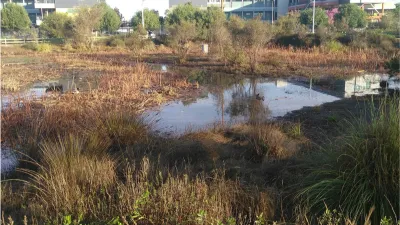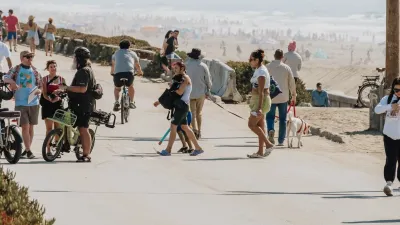Cooltown Studios looks at what makes a shiny new corporate district different from an organically-grown one.
"On the one hand you have authentic cultural destinations grown naturally, referred to as natural cultural districts (NCD)..., which attract creatives. On the other hand, you have developments that attempt to become such cultural destinations in one fell swoop, referred to on this site as corporate cultural districts (CCD).... However, they tend to attract tourists and corporate employees with higher salaries than creatives. Here are the objective differences why, from a placemaking point of view:
Time: NCDs are built slowly over time, decades.CCDs are built completely within a couple of years.
Developers: NCDs involved multiple developers.CCDs involve just a few, and often only one.
Building age: NCDs have a mix of old and new buildings. CCDs are predominantly new buildings...."
FULL STORY: The difference between a natural cultural district and a corporate cultural district

Trump Administration Could Effectively End Housing Voucher Program
Federal officials are eyeing major cuts to the Section 8 program that helps millions of low-income households pay rent.

Planetizen Federal Action Tracker
A weekly monitor of how Trump’s orders and actions are impacting planners and planning in America.

Ken Jennings Launches Transit Web Series
The Jeopardy champ wants you to ride public transit.

Washington Legislature Passes Rent Increase Cap
A bill that caps rent increases at 7 percent plus inflation is headed to the governor’s desk.

From Planning to Action: How LA County Is Rethinking Climate Resilience
Chief Sustainability Officer Rita Kampalath outlines the County’s shift from planning to implementation in its climate resilience efforts, emphasizing cross-departmental coordination, updated recovery strategies, and the need for flexible funding.

New Mexico Aging Department Commits to Helping Seniors Age ‘In Place’ and ‘Autonomously’ in New Draft Plan
As New Mexico’s population of seniors continues to grow, the state’s aging department is proposing expanded initiatives to help seniors maintain their autonomy while also supporting family caregivers.
Urban Design for Planners 1: Software Tools
This six-course series explores essential urban design concepts using open source software and equips planners with the tools they need to participate fully in the urban design process.
Planning for Universal Design
Learn the tools for implementing Universal Design in planning regulations.
Heyer Gruel & Associates PA
Ada County Highway District
Institute for Housing and Urban Development Studies (IHS)
City of Grandview
Harvard GSD Executive Education
Toledo-Lucas County Plan Commissions
Salt Lake City
NYU Wagner Graduate School of Public Service





























